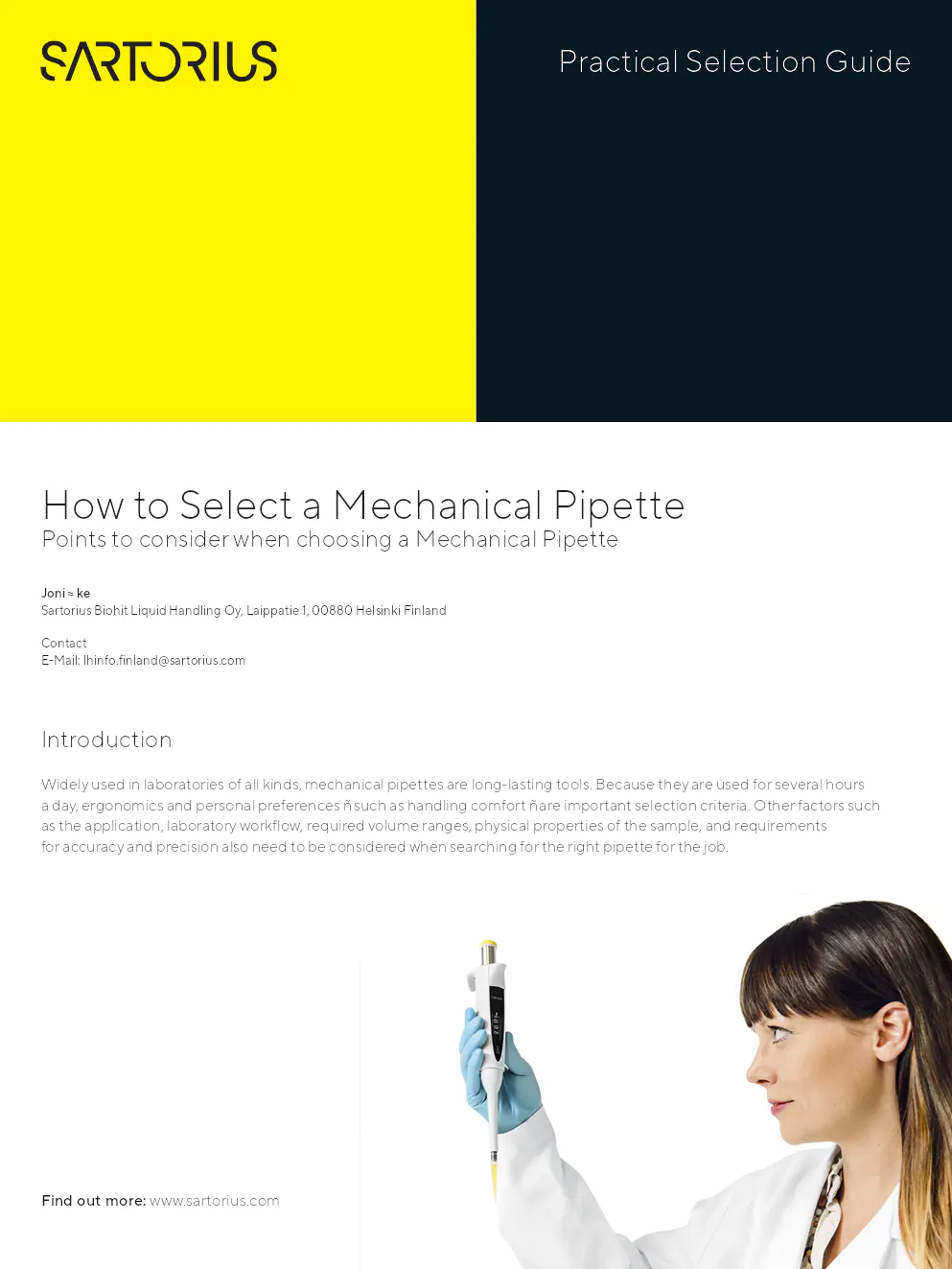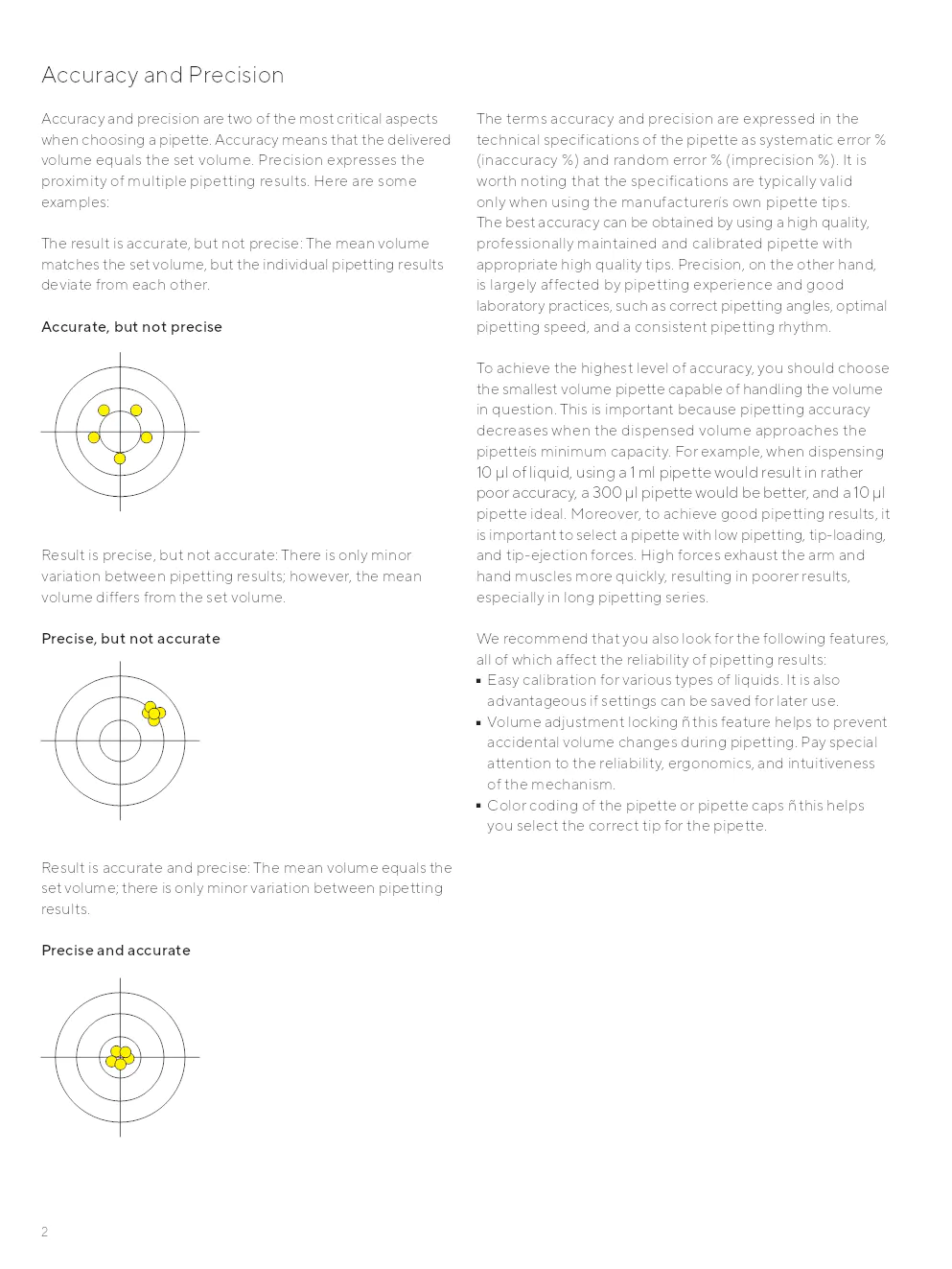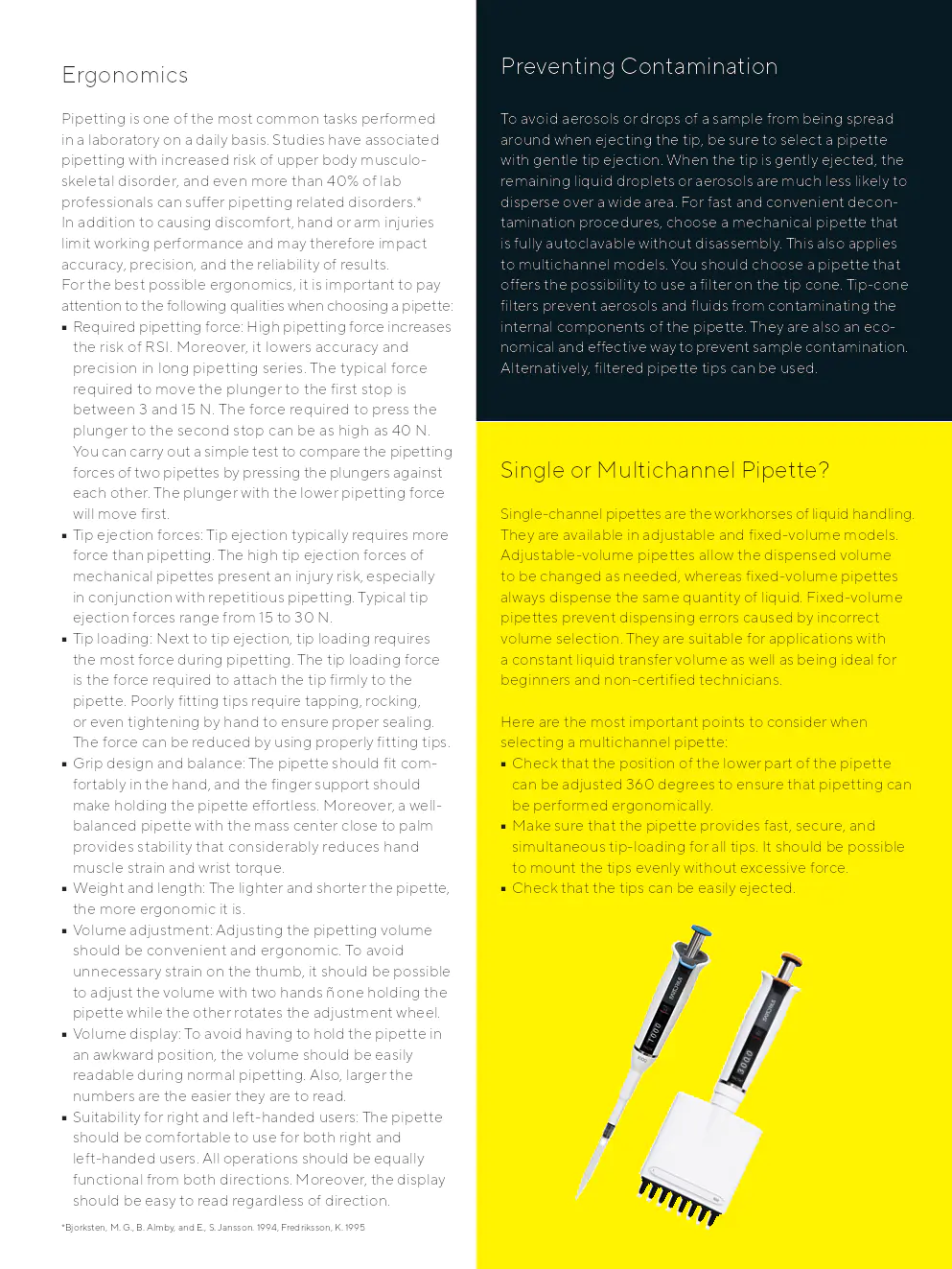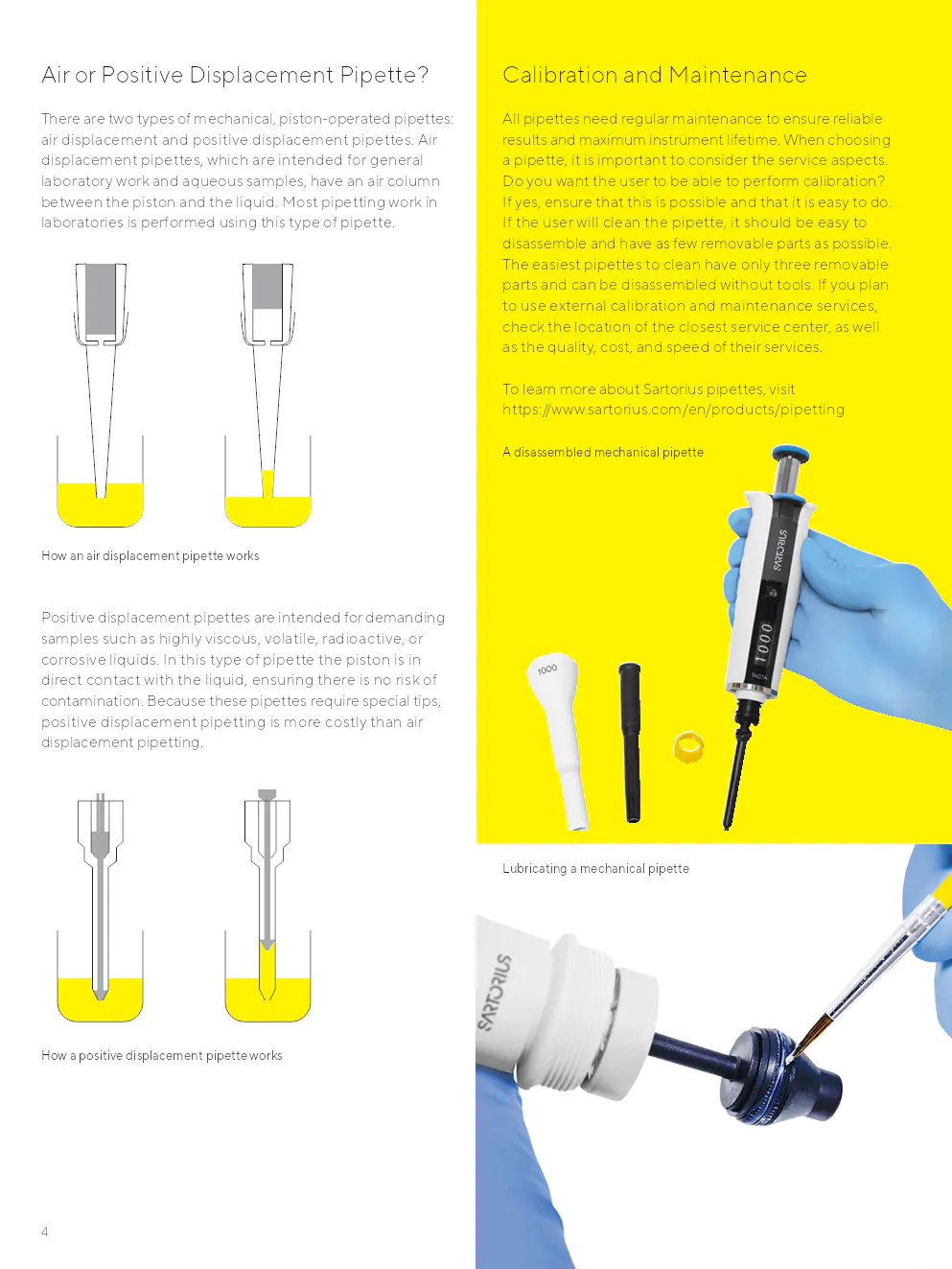guide pratique de sélection d'une pipette mécanique
guide pour choisir une pipette mécanique

Contenu du document
Introduction
Les pipettes mécaniques, largement utilisées dans tous les types de laboratoires, sont des outils durables. Comme elles sont utilisées plusieurs heures par jour, l’ergonomie et les préférences personnelles - telles que le confort de manipulation - sont des critères de sélection importants. D’autres facteurs tels que l’application, le flux de travail du laboratoire, les plages de volumes requises, les propriétés physiques de l’échantillon, et les exigences en matière de précision et de justesse doivent également être pris en compte lors de la recherche de la pipette appropriée pour un travail donné.
Précision et Justesse
La précision et la justesse sont deux des aspects les plus critiques lors du choix d’une pipette. La justesse signifie que le volume délivré équivaut au volume réglé. La précision exprime la proximité de multiples résultats de pipetage.
- Résultat juste, mais pas précis : Le volume moyen correspond au volume réglé, mais les résultats individuels de pipetage dévient les uns des autres.
- Précis, mais pas juste : Il n’y a que peu de variation entre les résultats de pipetage ; cependant, le volume moyen diffère du volume réglé.
- Juste et précis : Le volume moyen est égal au volume réglé ; il n’y a que peu de variation entre les résultats de pipetage.
Pour atteindre le plus haut niveau de justesse, vous devez choisir la pipette de plus petit volume capable de gérer le volume en question. Il est important de sélectionner une pipette avec des forces de pipetage, de chargement de pointe, et d'éjection de pointe faibles.
Ergonomie
Le pipetage est l'une des tâches les plus courantes effectuées dans un laboratoire quotidiennement. Des études ont associé le pipetage à un risque accru de troubles musculo-squelettiques du haut du corps. Pour la meilleure ergonomie possible, il est important de prêter attention à certaines qualités lors du choix d'une pipette.
- Force de pipetage requise
- Forces d'éjection de pointe
- Chargement de pointe
- Poids et longueur
Prévention de la contamination
Pour éviter que des aérosols ou des gouttes d'un échantillon ne soient dispersés, il est important de choisir une pipette avec une éjection de pointe douce. Pour des procédures de décontamination rapides et pratiques, choisissez une pipette mécanique entièrement autoclavable.
Pipette à canal unique ou multicanaux ?
Pipettes à canal unique sont les principales utilisées pour la manipulation de liquide. Les modèles à canal unique sont disponibles en modèles à volume fixe et réglable.
Pipette à air ou à déplacement positif ?
Il existe deux types de pipettes mécaniques, à déplacement d'air et à déplacement positif, qui sont utilisées selon les spécificités de l'échantillon.
Entretien et Calibration
Toutes les pipettes nécessitent un entretien régulier pour assurer la fiabilité des résultats. Lors du choix d'une pipette, il est important de considérer les aspects de service.
Pour plus d'informations, visitez : www.sartorius.com
Spécifications susceptibles de changer sans préavis. Copyright Sartorius Lab Instruments GmbH & Co. KG. Statut: 06 | 2021
Entreprise(s) concernée(s) :
Document protégé
Document uniquement accessible aux visiteurs connectés
Pas encore de compte ?
Inscrivez-vous
Déjà un compte ? Cliquez ici pour vous connecter
Connectez-vous




